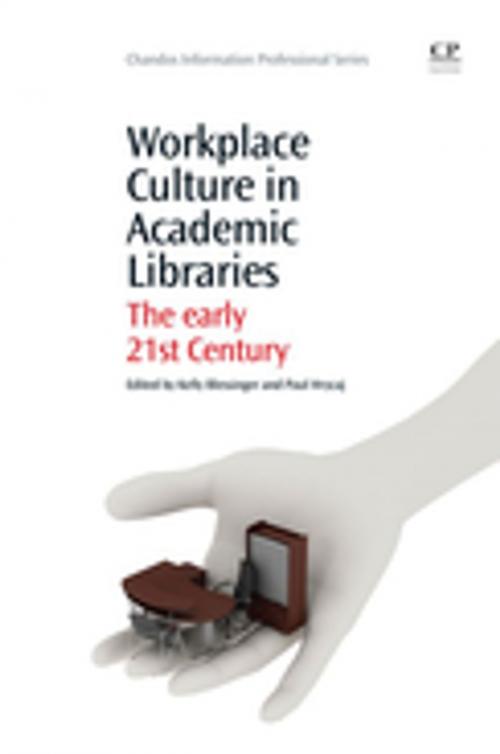Workplace Culture in Academic Libraries
The Early 21st Century
Nonfiction, Reference & Language, Language Arts, Library & Information Services, Social & Cultural Studies, Social Science, Sociology, Reference| Author: | ISBN: | 9781780633688 | |
| Publisher: | Elsevier Science | Publication: | February 11, 2013 |
| Imprint: | Chandos Publishing | Language: | English |
| Author: | |
| ISBN: | 9781780633688 |
| Publisher: | Elsevier Science |
| Publication: | February 11, 2013 |
| Imprint: | Chandos Publishing |
| Language: | English |
Workplace culture refers to conditions that collectively influence the work atmosphere. These can include policies, norms, and unwritten standards for behavior. This book focuses on various aspects of workplace culture in academic libraries from the practitioners’ viewpoint, as opposed to that of the theoretician. The book asks the following questions: What conditions contribute to an excellent academic library work environment? What helps to make a particular academic library a great place to work? Articles focus on actual programs while placing the discussion in a scholarly context. The book is structured into 14 chapters, covering various aspects of workplace culture in academic libraries, including: overview of workplace culture, assessment, recruitment, acclimation for new librarians, workforce diversity, physical environment, staff morale, interaction between departments, tenure track/academic culture, mentoring/coaching, generational differences, motivation/incentives, complaints/conflict management, and organizational transparency.
- Includes the most current best practices and models in academic libraries
- Represents the viewpoints of both the employee and manager
- Focuses on the academic library as workplace rather than as a service provider
Workplace culture refers to conditions that collectively influence the work atmosphere. These can include policies, norms, and unwritten standards for behavior. This book focuses on various aspects of workplace culture in academic libraries from the practitioners’ viewpoint, as opposed to that of the theoretician. The book asks the following questions: What conditions contribute to an excellent academic library work environment? What helps to make a particular academic library a great place to work? Articles focus on actual programs while placing the discussion in a scholarly context. The book is structured into 14 chapters, covering various aspects of workplace culture in academic libraries, including: overview of workplace culture, assessment, recruitment, acclimation for new librarians, workforce diversity, physical environment, staff morale, interaction between departments, tenure track/academic culture, mentoring/coaching, generational differences, motivation/incentives, complaints/conflict management, and organizational transparency.
- Includes the most current best practices and models in academic libraries
- Represents the viewpoints of both the employee and manager
- Focuses on the academic library as workplace rather than as a service provider















